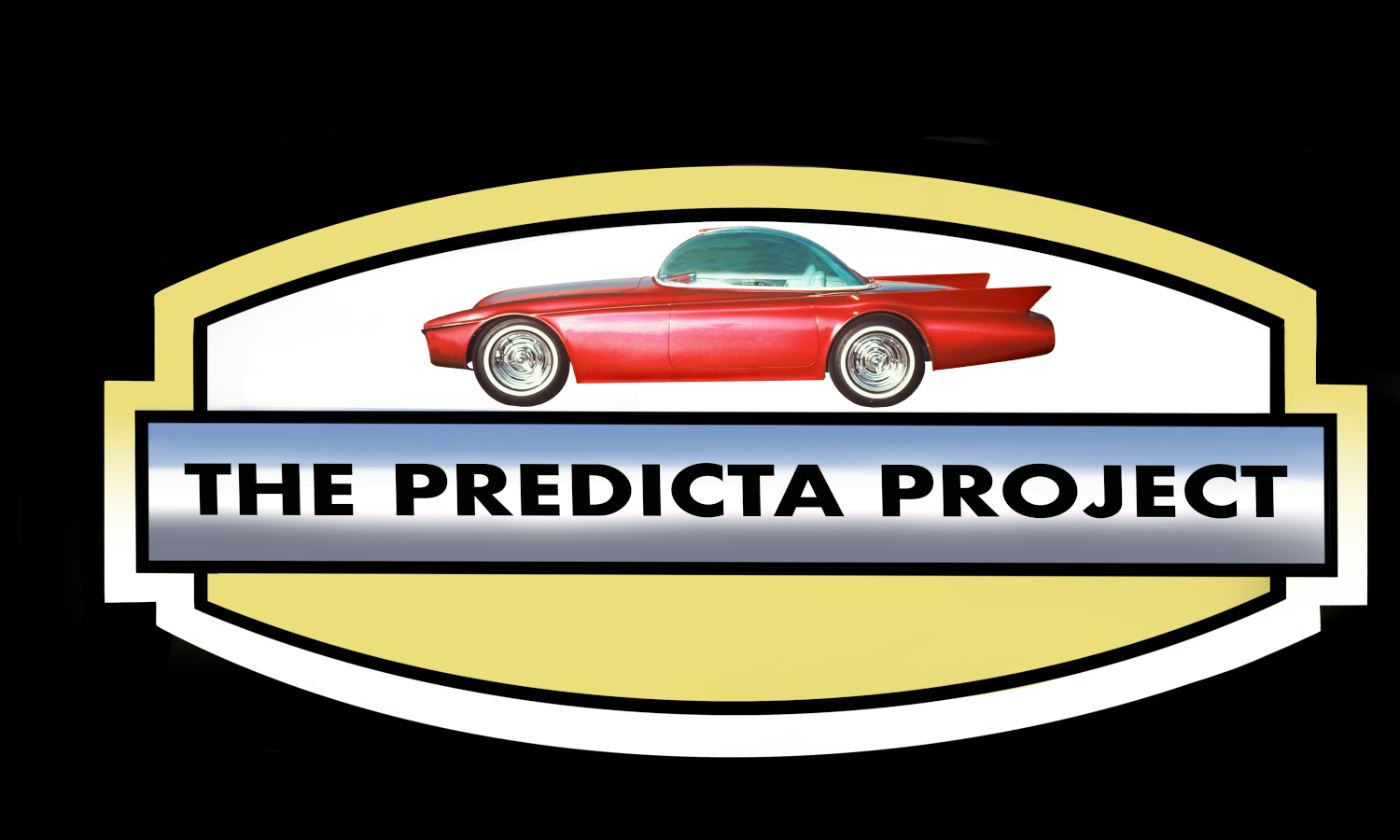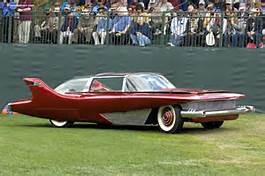This part of the Predicta Project will involve creating a fictional history timeline for the car, and building an entire miniature universe of scale models, advertisements, a diorama and other ephemera to tell an alternative history that never was. In this reconstructed past, what if Ford’s Jacques Passino had approached Darryl about including the Predicta in the famed Ford Custom Car Caravan. Check out the plausible alternative history narrative below and model description. When completed by Brad Leisure, we’ll feature color illustrations of this phantom design of the Predicta.
The Ford Custom Car Caravan and the Predicta
In late 1962, the Ford Division’s Custom Car Caravan had just started, and the Division was looking for additional cars to populate its promotional cadre of customized cars. Most of the vehicles in the first (of eventually three) Caravans were modified production cars that featured some exterior restyling, enhanced power plants, and eye-candy paint jobs. Other campaigned vehicles were barely disguised Ford Division “concept cars” that the audience was intentionally led to believe presaged cars that could be purchased at dealership. Still other cars were out-and-out wild customs that were largely fabricated from an assembly of parts by their private (non-corporate affiliated) customizers/builders. But all the cars shared one inescapable feature: they had to be, and were, motivated by a Ford powerplant.
By late 1962, and after more than two years of public accolade and magazine awards, the Predicta had largely retired from shows and was being street driven — and Darryl drove the car a lot: Almost 30,000 miles proved the viability of the unique steering system, the practicality of which was punctuated in 1960 when he drove it down a dragstrip at a good clip at the behest of its mighty Chrysler Hemi V8.
In the fickle environment of highly-competitive show cars in the early Sixties, old customs quickly lost their appeal if they weren’t regularly freshened (and often restyled) for each show season: the voracious hot rod and custom car crowds wanted to see wild and fresh cars, each outdoing other cars with more and more outlandish features. In this maelstrom of increasingly wild custom car styles, the Predicta hadn’t changed (except for relatively minor changes), and was a bit long in the tooth with “road patina.” In truth, the car didn’t sparkle anymore and Darryl hadn’t pandered to fickle car show expectations, either.
Ford was interested in the Predicta even though it was two years old by the time that the initial Ford Custom Car Caravan program was first being planned. Starbird’s wild, bubble-topped car had been widely campaigned after its debut at the Monterey show in late 1960. Despite its eclectic array of parts (including the Chrysler V8), it was unmistakably a Ford. The door and hood shapes were factory T-Bird, and every magazine described as a futuristic T-Bird. Ford’s Jacques Passino had become aware of the huge role this car had played in the custom car hobby, and Darryl was only one of two major customizers that hadn’t been invited to participate in the by then-famed Ford Custom Car Caravan.
At the ’63 Grand National Roadster Show (February 15-24) where Starbird presented his just-completed bubble topped VW-powered Futurista specifically built on commission for the Monogram kit, Passino approached the famed bubbletop king (after the now-legendary group interview with Barris, Roth, Winfield, Cushenbery and Wilhelm) had been recorded, and asked if he’d be interested in restyling, refurbishing and re-equipping the Predicta and allowing it to be displayed in the Ford Caravan. It was an audacious (and surprising) proposal because Passino had remembered the car from media coverage several years before; he was interested in campaigning what would be the third of three wild bubble-topped cars in the Ford Caravan.
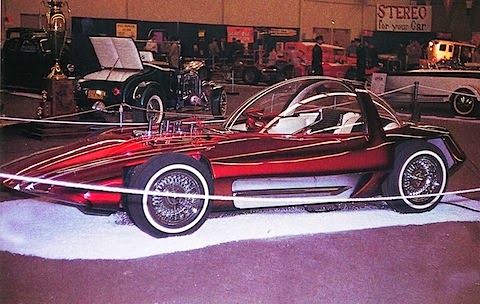 In one way, the stage had already been set for Starbird: Competitor and good friend Bill Cushenbery’s Silhouette had been previously adopted by the Ford Caravan once Bill substituted a company-supplied Ford 427 for the original Buick nailhead engine.
In one way, the stage had already been set for Starbird: Competitor and good friend Bill Cushenbery’s Silhouette had been previously adopted by the Ford Caravan once Bill substituted a company-supplied Ford 427 for the original Buick nailhead engine.
The over-the-top Di Dia 150 also ran another 427 Ford engine. Of course, Ford told Darryl what had been said to other potential invitees for the Caravan: a Ford engine had to be used.
Ford’s principal objective for Darryl was that the Predicta had to prominently display Ford mechanical features and be as mechanically “serious” as Starbird could make it for the purpose of convincing the public that easily-acquired, installation-ready Ford performance parts and equipment could be successfully used on a wild, futuristic custom car and, by extension, on hot rods and competition cars, and selected, ala carte, by purchasers of production cars that could be acquired at a Ford dealer. Ford was on a well-publicized campaign to promote its “Total Performance” program and wanted the Predicta to features as many such parts as possible; therefore, Ford told Darryl that the company wanted the restyled car to feature a high-performance version of the new firebolt 289, coupled with a tweaked C-4 supplied by Shelby American, to prove the performance viability of the new small displacement engine
There were additional details favorable to Darryl: Ford would pay for all agreed-upon aesthetic and mechanical changes, and the company would provide all the needed Ford mechanical components, and also pay a healthy rental fee for the use of the car. And Darryl could continue on his plan to constantly update the styling. He was stunned by the Ford offer: the proposed revival of his favorite car coupled with its display in one of the most high-profile and prestigious venues available in the early Sixties was certainly very interesting.
At about the same time, Monogram became aware of the Ford offer and told Starbird of the Company’s proposal to produce a hobby kit of the car — Monogram had previously decided that the kit would be viable only if the car were restyled and updated. Bob Reder and Starbird talked about the Monogram proposal to offer a kit of the so-called Ford Custom Car Caravan version of the Predicta and decided that both the builder and model kit company would prosper. Starbird would receive a healthy initial check as an advance against a generous kit-based royalty structure and Ford could help Monogram, in fact, market the kit by displaying the car that was then a part of a very high-profile car show campaign. And Darryl wouldn’t need to sell the car — in fact, it had to remain in his ownership.
The ample funds suddenly available from Ford and Monogram would not only cover the costs of the significant restyling of, and re-outfitting, the Predicta, but would also be easily sufficient that the car could now be finished to a very high standard that the hurried initial construction schedule — not to mention the dearth of funds — did not permit. From Starbird’s perspective, the deal was great. This was a heady time for him: he would earn a good profit, the car could become even more famous after it was rebuilt, and modelers everywhere would be able to build a model of the car in its best guise. Darryl eagerly signed the papers with Ford and Monogram and consulted with Jack Besser to work out the kit-production details with Monogram, and the company didn’t buy the car though it would eventually share display rights with Ford.
Ford didn’t object to a joint arrangement with Monogram; certainly, other customizers (whose cars were featured on the Caravan had previously struck consulting deals with other hobby kit manufacturers, principally AMT) had concurrently become “customizing consultants” with those other kit manufacturers. Interestingly, this would be the only Custom Car Caravan car would be rendered in kit form exactly the way it appeared in the Caravan — the Silhouette kit only featured the early Buick nailhead engine. Ford’s only objective for Darryl was that the Predicta had to prominently display Ford mechanical features and be as mechanically “serious” as Starbird could make it for the purpose of convincing the public that easily-acquired, installation-ready Ford performance parts and equipment could be successfully used on a wild, futuristic custom car and, by extension, on hot rods and competition cars, and on production cars that could be purchased at a Ford dealer. Ford was on a well-publicized campaign to promote its “Total Performance” program and wanted the Predicta to features as many such parts as possible; therefore, Ford told Darryl that the company wanted the restyled car to feature a high-performance version of the new 289, coupled with a tweaked C-4 supplied by Shelby American, to prove the performance viability of the new small displacement engine.
Restyling work started in early March of 1963. Long hours designing the changes to the car, and determining how all of the Ford parts could be fit, commandeered a great deal of Darryl’s attention at the time when he was also building the Ultra Truck at the same time in the same dingy original shop from which Darryl would soon move at the time that the restyled Predicta was completed. To ease the burdens, the two-source budget was substantial and Ford parts started to arrive from the corporation in early April. Restyling and mechanical work progressed through Summer of 1963 with the re-engineering to accommodate the Ford bits taking the most time. Monogram photographers visited Starbird’s shop to take photos and measurements for the pending kit; additionally, Ford checks arrived regularly for the five-month rebuilding time period along with at least one visit by Passino to check on the progress of the vehicle coupled with many visits from Monogram personnel to measure the car for the kit.
By late October 1963, the car was ready for the Ford Caravan. And the rest is “history.”
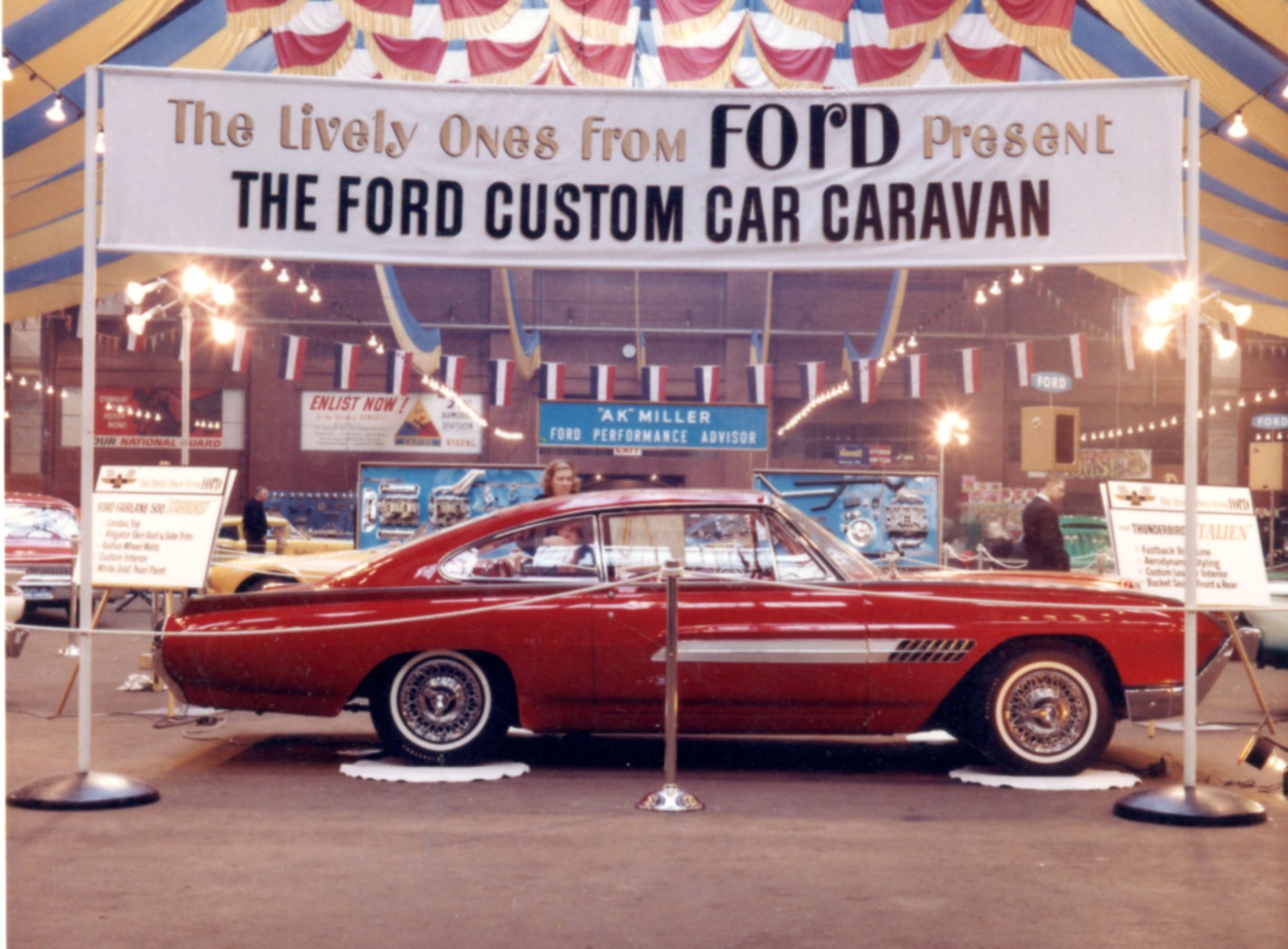
The following features appeared on the restyled/refitted Predicta when the car was placed in the Ford Custom Car Caravan.
Mechanical changes / detailing
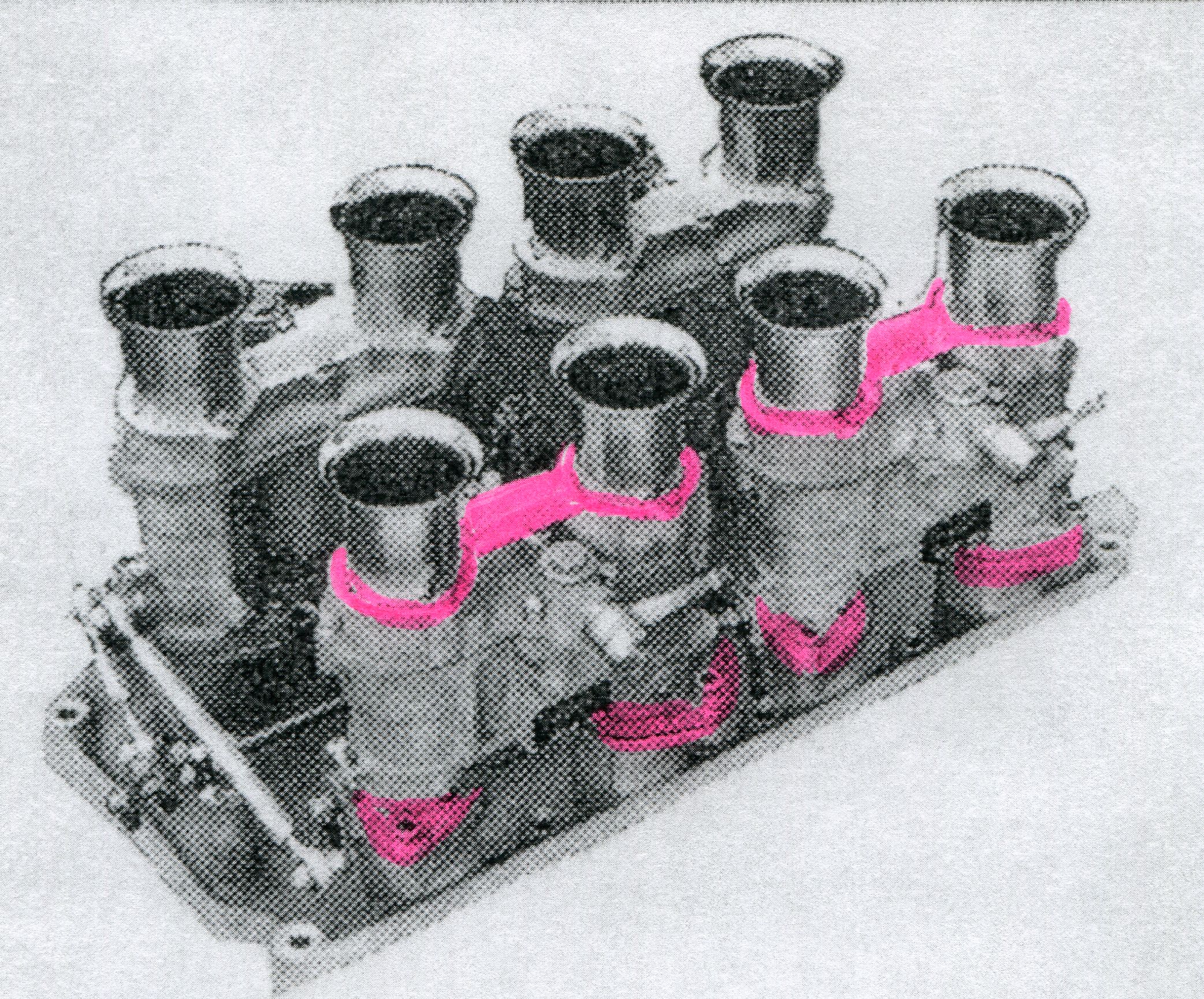 Ford 289 “K” motor fitted with the Weber fuel injection
Ford 289 “K” motor fitted with the Weber fuel injection
set up Webber then marketed by Ford’s famed Total Performance Program. This motor will be bolted to a performance-enhanced C-4 automatic transmission activated by a simple lever on the console;- Aluminum script valve covers: “Predicta Powered by Ford”
- ‘60 Ford front frame clip installed to replace antiquated ‘56 T-Bird frame/suspension design;
- 9″ rear axle with (larger) Lincoln drum brakes;
- Kelsey-Hayes front disc brakes;
- Large front and rear sway bars;
- Ford air conditioner;
- Specially-made Borraini wire wheels fitted to whitewalls, with pin drive;
- Larger (wider) radiator – cross flow, imported from a ‘58 Thunderbird;
- Frame painted body color;
- Underbody painted semi-gloss black;
- Suspension components all chromed;
- Removable engine compartment pieces all chromed.
Exterior styling changes:
- Hidden hinges operated the bubble top, mounted in the rear;
- Gas filler moved to atop the driver’s side rear quarter panel behind a shaped opening located to the inside the bubble top;
- Wheel wells, a bit flattened at the top, front and rear;
- Rear grille shell angled slightly inward at the bottom;
- Taillights: integrate thinner grille bars set flush with the red lenses which were pulled a bit closer to the end of the grille opening;
- Angle-cut exhaust pipes (one to a side) tucked into reveals in the lower rear pan at the same angle as the rear pan when viewed in profile. Angle of exhaust tips matches angle of rear grille shell surround;
- Fixed rear deck replaced by a small formal trunk (of the same shape) which trunk would host the battery, and show details;
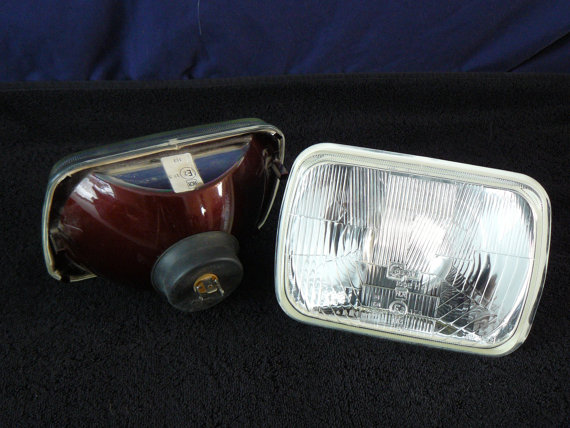 Vintage Cibie rectangular units substituted for the original quad headlights, placed on either side of new grille bars that matched the new grille bars fitted to the rear light housing;
Vintage Cibie rectangular units substituted for the original quad headlights, placed on either side of new grille bars that matched the new grille bars fitted to the rear light housing;- Car painted a cinnamon candy pearl to mimic a Ford production color.
Bubble-top styling / latching systems
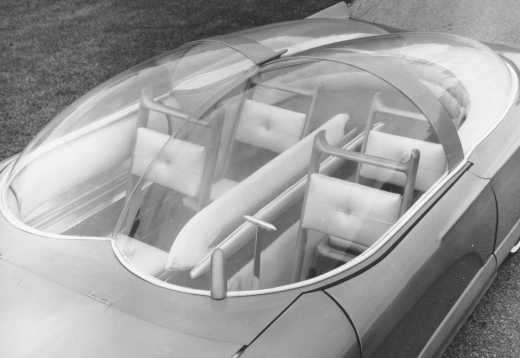 Two-piece bubble top, the rear half fixed in placed. The front of the bubble is hinged at the front to the underside of the cowl. Starbird pioneered this front-hinged design in his famed Electra finished just after the Predicta;
Two-piece bubble top, the rear half fixed in placed. The front of the bubble is hinged at the front to the underside of the cowl. Starbird pioneered this front-hinged design in his famed Electra finished just after the Predicta;- The front of the bubble is lifted by two screw jacks placed underneath the structural panel to which the front of the bubble is attached.
- The back of the front bubble is fixed with a chrome band to the underside of which is fitted a thin weatherstrip to seal it against the back of the bubble.
Interior styling changes:
Dash:
- Wrap around (metal) painted dash, integrated into doors with white upholstered/padded fascia. Door metal panel contains emergency release lever for door opening.
- Dash was highly-styled, painted, with a padded top;
- A/C outlets in top of dash, aimed at both sides;
- Defroster outlets: top of dash/front, upper doors (with “feeder” tubes through the front door jambs from the dash); around rear of rear part of bubble and the inside of the rear bubble, too.
 Radio in dash with Studiosonic reverb unit Sonic mounted in rear panel.
Radio in dash with Studiosonic reverb unit Sonic mounted in rear panel.- Full instrumentation built into dash in front of driver — organic appearance.
Console:
- Full length, curves up to fully integrate with the painted dash;
- Philco-TV (“Predicta” style) sits low on the dash, fit flush with upper extension of dash;
- Tiller steering protrudes (stirrup style, two slots in console fascia);
- Panel of integrated switches in revised console for: radio, doors, etc.
- Push button start button set into the curved console beneath the TV;
- Handbrake on left hand side of console, recessed when released (wider reveal at front for hand); and
- Switches: lights, bubble top, turn lights, accessories.
Seats:
-
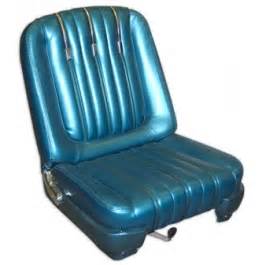
XL 500 buckets Taller (more upright) seats, upholstered in deep cinnamon vat-dyed leather, based on ‘63 XL-500 buckets
- Seat belts
Doors
- Carpet at the bottom, hosting ‘63 XL door lights.
- Defroster outlets at top of doors, “fed” through tubes through front of door to the door jamb.
Miscellaneous interior appointments:
- Custom-made sill plates with “Predicta” script;
- Stirrup-style tiller steering lever has buttons on far left and right of the tiller , respectively, for turn lights;
- Tinted, off-white carpet on floor, area behind seat, and on lower doors;
Ephemera:
- We will create another hobby store display base onto which we’ll place an “out of the box” model
- We will also create another box that will depict this version of the car
Advertisements:
- We’ll revise other advertisements (different than those for the Enhanced kit) that will contain elements of the original adverts, and include specific references to the Caravan and to the restyled car.
